Powdery mildew on an apple tree: description and reasons for its appearance

Surely there is no such garden in which there is no apple tree - it is appreciated for the taste and benefits of fruits rich in fiber, trace elements and vitamins necessary to maintain the normal functioning of the human body. However, it happens that a white bloom appears on the leaves of the tree. At this point, it is very important to start treating the fruit crop as soon as possible, since plaque indicates the appearance of powdery mildew.
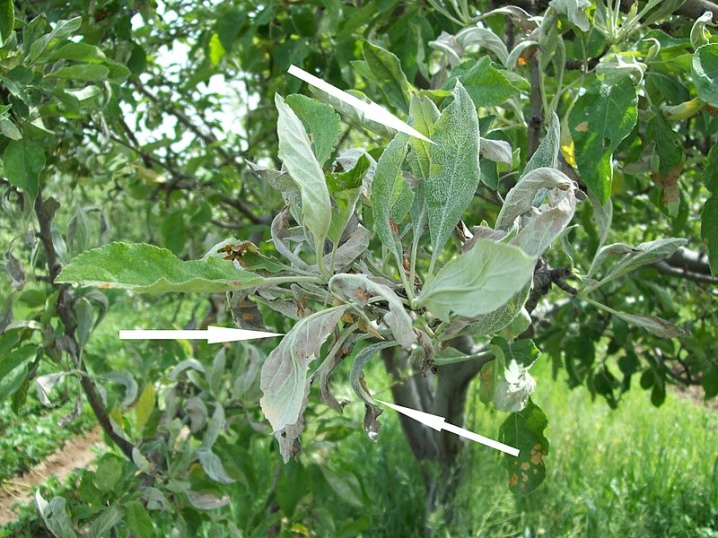
Description of the disease
Powdery mildew is one of the most serious diseases of tree crops, which negatively affects the leaves, young shoots and inflorescences of the tree. In the absence of measures to combat this pathology, the fruit becomes infected and, as a result, the quality and quantity of the crop deteriorates. The causative agent of the disease is the Erysiphales mushroom. Where did it come from and how it appears on the tree - biologists still have not been able to give an unambiguous answer. But it is known for certain that its spores can winter in the bark of the trunk and branches, as well as in the ground around the apple tree.
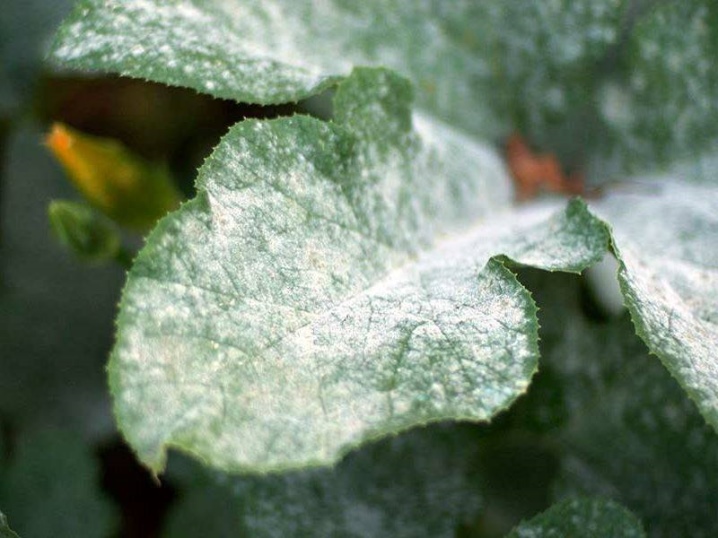
With the onset of spring heat, the fungus is activated. Its development takes place in two stages. At the first stage, conidia sporulate and develop. This process begins in early spring when the spores become active and enter the tree's body.
When the conidia are fully formed, the process of total infection of the tree starts - it takes 3-4 weeks. At this time, secondary infection develops. In a favorable environment, it rapidly captures the entire fruit crop and moves from leaf plates to branches, stems and buds.
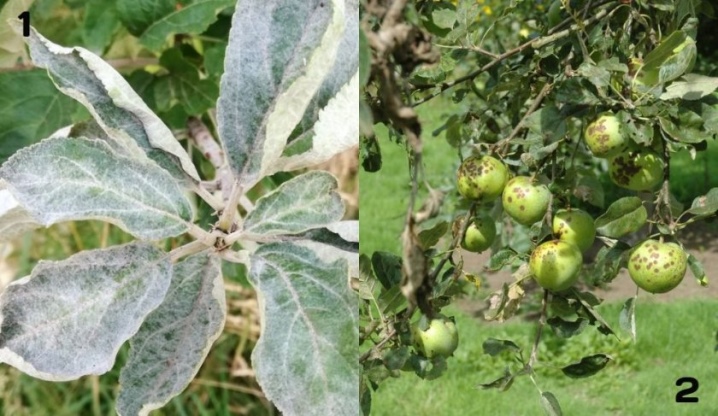
The second stage is called "marsupial". During this period, not only plaque appears on the outside of the leaf plates, but also black fruit bodies. They occupy a vast area and branch quickly, such a bloom can be seen on the bark of trees and even on fruits. Affected apples do not lie in winter, they can be used exclusively as dried fruits.
Thus, the main signs of powdery mildew are:
- the appearance on the leaves of a whitish bloom;
- loss of a rich shade of leaf plates, their fading and subsequent twisting;
- with a large amount of damage, the tips of the shoots begin to die off, the leaves look stunted, and then fall off altogether;
- when the fruit is damaged, their peel becomes wrinkled, like a damaged net.
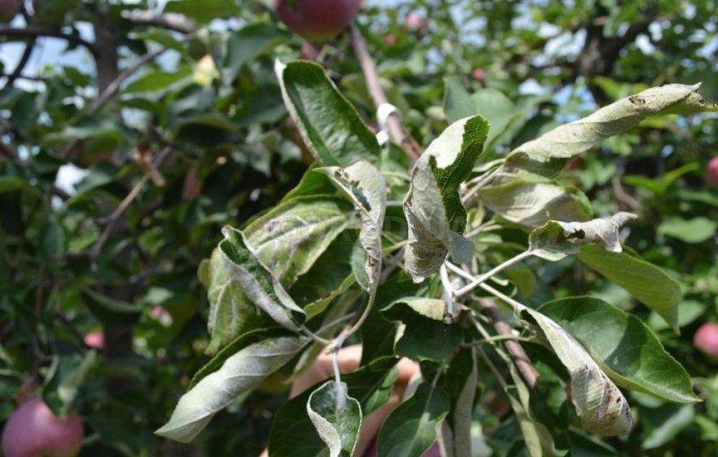
Reasons for the appearance
Sources of infection can be found anywhere - on the trunk, nearby grass, on tree branches, under the bark, as well as in the near-trunk circle in the ground. The fungus easily tolerates winter frosts, at this time of the year it finds shelter on the bark of trees and plant debris, uncleared in autumn. The pathogen dies only if, for several hours, the air temperature is kept at around - 27 degrees and below.
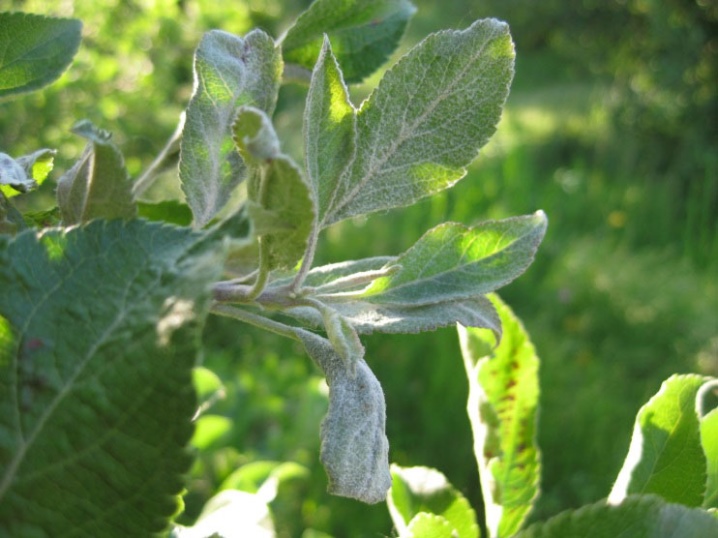
With the onset of spring, spores are quickly carried by the wind to all garden plantings. A humid environment is favorable for spore germination. In this case, the peak of the development of the fungus falls on hot weather. That is why the danger of infection of an apple tree with powdery mildew is maximum in regions where warm, but rainy weather is kept in April-May.
The spread of the fungus is facilitated by:
- soils with poor water conductivity;
- lack of sunlight at an increased average daily air temperature;
- mild winters with frequent thaws;
- rapid warming in spring after a snowy winter.

Treatment methods
Colloidal sulfur is a universal preparation that allows you to get rid of fungal infections of various types and protect fruit crops from insect pests. A 2% solution of this agent is used to treat the apple tree at the budding stage until the flower bowl opens. At the end of flowering, prophylactic treatment with a 1% solution should be carried out.
Bordeaux liquid has become widespread. This broad-spectrum fungicide has both prophylactic and curative properties. The composition effectively fights powdery mildew, gray mold and spotting. To achieve the maximum effect, it is recommended to carry out two processing of the apple tree:
- in early spring - 3% solution;
- during the growing season - 1%.
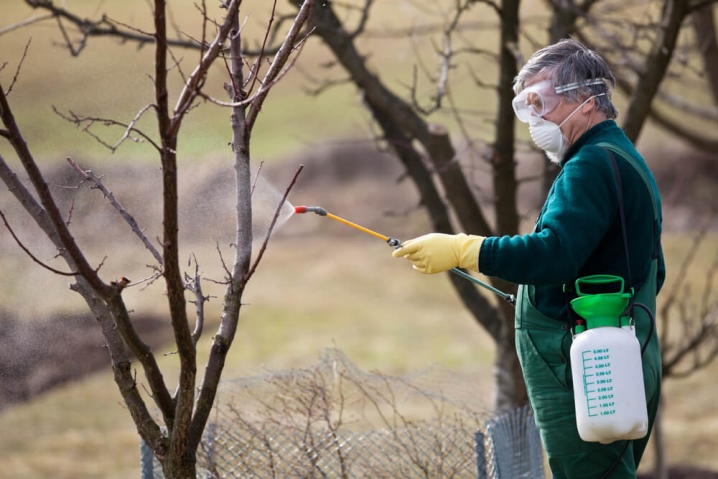
The rate of use is:
- for an adult tree - 10 l;
- for the young - 2 liters.
For healthy plants, one treatment every three years is enough for prevention. Spraying must be complete, including the stem. It is imperative to cultivate the land in the near-trunk circle.

Another effective remedy for combating fungal diseases of the apple tree is copper sulfate. This remedy based on copper sulfate salt is used to prevent powdery mildew, as well as anthracnose, scab and moniliosis. For the treatment and prevention of the fungus, the tree is processed in early spring, immediately after the snow melts and before the buds begin to bloom.
The prophylactic composition is prepared on the basis of 100 g of dry matter dissolved in a bucket of water. Spraying is carried out in dry weather at a temperature of no more than 30 degrees.
Topaz is a specialized fungicidal preparation based on penconazole. Effective for the prevention and treatment of fungal infections. The active ingredient quickly penetrates into the affected tree tissues, neutralizes the pathogen and thereby prevents its sporulation in the early stages of the lesion. The tool gives a noticeable healing effect and reduces the risk of re-infection.
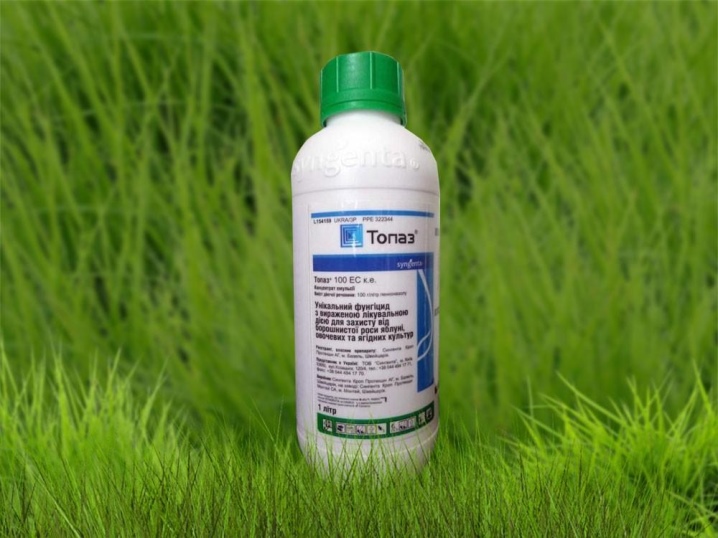
To prevent the appearance of powdery mildew, the first treatment is carried out in early spring, at the very beginning of the growing season. When symptoms of pathology appear, the treatment is repeated 2-3 times with an interval of 10-14 days. In general, the apple tree can be sprayed no more than 4 times per season. To make a solution, 10 ml of the drug is diluted in a bucket of water - this amount is enough for three processing of an adult tree. Its advantages include economical consumption, versatility, safety for plants and humans, as well as high efficiency.
Other prophylactic drugs include:
- granular urea;
- "Cumulus";
- Topsin;
- "Impact";
- Fitosporin.
If there are no specialized chemicals at hand, then you can use folk remedies. Most often, gardeners use soda ash - it gives a good effect in the fight against powdery mildew, in addition, it contributes to feeding and rejuvenating garden crops. To spray apple trees, 50 g of soda is dissolved in a bucket of water and 40-50 g of any soapy substance is added. An infected plant is treated with a ready-made composition once a week.
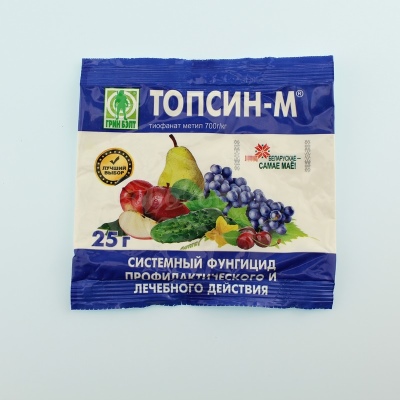
As a temporary measure, you can take a solution of potassium permanganate or copper oxychloride. However, they do not create a full-fledged protection of the plant, but only give a delay of 3-4 days. During this time, it is advisable for a gardener to have time to purchase a fungicidal preparation, since in the fight against serious lesions, only highly specialized agents give an effect. Sometimes it is better to sacrifice the harvest of one season, but save the tree for future fruiting.
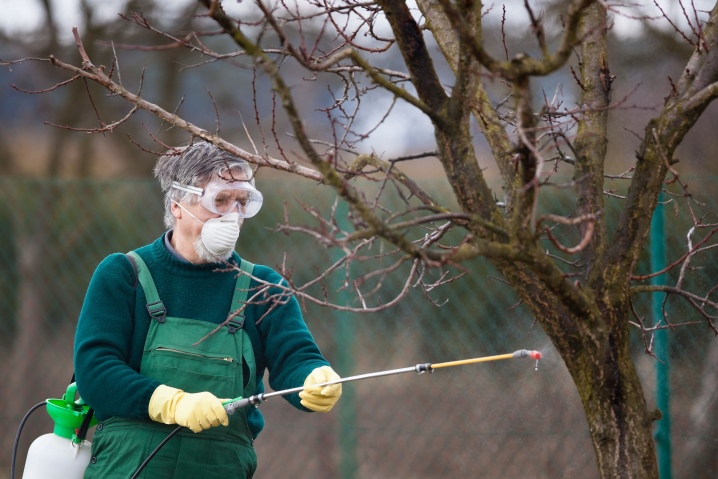
In addition to spraying with antimycotic drugs, it is important to strengthen the plant's immunity. In this case, the dosage must be strictly observed, since some fertilizers create a favorable environment for the development of infection. For example, nitrogenous top dressing increases the apple tree's ability to grow green mass, but at the same time increases the strength of the fungi parasitizing on them. If the dose of nitrogenous fertilizing is exceeded, the mycelium will spread through the tree especially quickly; only phosphorus and potassium fertilizers can reduce its activity.
Advice! If you are just planning to plant an apple tree on your site, be sure to disinfect it. To do this, the roots of the seedlings are soaked for a day in a pale solution of potassium permanganate. However, do not overdo it - the strong solution will cause burns and the plant will be sick for a long time.
Enhancing the immunity of a young seedling is promoted by "Epin" and other growth stimulants. But at first it is better to give up nitrogenous compounds, especially in the first year after planting the apple tree, like many other fruit crops, they still do not give a crop.
Disease Resistant Varieties
Scientists have bred several varieties of apple trees that are resistant to powdery mildew:
- Gold Rush;
- Modi;
- Palette;
- Florin;
- Brigdam Delicious;
- Arbat;
- Topaz;
- Amulet;
- Ligol;
- Linda;
- Mutsu.
Through the efforts of scientists, these plants were grafted with genes for resistance to powdery mildew and some other fungal infections. In addition, they gained immunity to severe frosts and garden pests. It is these plants that are increasingly chosen by gardeners these days.

For the reasons for the appearance of powdery mildew, see the video.













The comment was sent successfully.